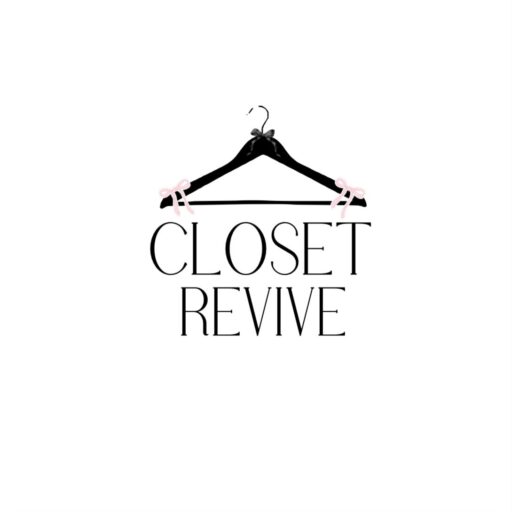Your cart is currently empty!

Sustainable Fashion: Why Thrifting is the Future
In recent years, fashion has experienced a paradigm shift as more people realize the environmental impact of the industry and look for more sustainable ways to express their personal style. One growing solution is thrifting, which not only satisfies the need for unique, affordable fashion but also makes a strong case for sustainability. Thrift shopping—buying secondhand clothing instead of new—has grown from a niche habit into a mainstream trend embraced by eco-conscious consumers worldwide. With climate change and waste management as critical concerns, it’s clear that thrifting is not just a passing trend but the future of sustainable fashion.
Environmental Benefits of Thrifting
The fashion industry is notorious for its environmental impact. Producing clothes requires enormous resources, with estimates suggesting it takes up to 2,700 liters of water to make a single cotton t-shirt. Fast fashion, in particular, has exacerbated environmental issues by encouraging consumers to buy inexpensive, trendy items, often made with synthetic materials that do not biodegrade easily. As a result, millions of tons of clothing end up in landfills each year, where they can take hundreds of years to decompose, releasing harmful greenhouse gases in the process.
Thrifting offers a sustainable alternative by extending the lifecycle of clothing. When you buy secondhand, you’re preventing these items from going to landfills and avoiding the resource-intensive processes required to produce new garments. Every piece of clothing purchased secondhand represents a reduction in demand for new clothing production, thereby reducing water usage, chemical pollution, and carbon emissions. For environmentally conscious shoppers, thrifting is an effective way to support a greener planet by making a more sustainable fashion choice.
Thrifting and Circular Fashion
The concept of circular fashion promotes a closed-loop system where clothes are made to last longer, can be repaired, repurposed, or recycled rather than disposed of after a short period of use. Thrifting perfectly aligns with the principles of circular fashion. When we donate or buy secondhand clothes, we’re keeping products in use for as long as possible, creating a more sustainable and less wasteful fashion cycle.
This cycle doesn’t just stop with buying used clothing; it often inspires people to donate, repair, or even upcycle garments, creating a continuous chain of reuse. Unlike fast fashion’s linear model—buy, wear, and discard—circular fashion, bolstered by thrifting, embraces durability and creativity over consumption. As more people recognize the benefits of a circular economy, thrifting has the potential to reshape the way we think about our wardrobes.
Economic Accessibility
Thrifting is also more affordable than traditional retail shopping, making it accessible to a wide range of consumers. Since secondhand items are often sold at a fraction of their original price, people from various economic backgrounds can afford high-quality, unique pieces without breaking the bank. This affordability factor is one reason why thrifting has become especially popular among younger generations, such as Gen Z and millennials, who are increasingly vocal about their support for sustainable and budget-friendly fashion options.
In addition to affordability, thrifting offers access to items that may not be available in mainstream stores, including vintage and designer pieces. Thrift shops often carry a diverse array of clothing, from past decades to recent collections, allowing fashion enthusiasts to curate a style that reflects their individuality without spending excessively. This economic inclusivity is a significant reason why thrifting is likely to remain relevant for years to come.
Thrifting as a Social Movement
Thrifting has grown beyond simply shopping; it has become a social movement that challenges the fast fashion industry and its unsustainable practices. Social media platforms have amplified this movement, with influencers and eco-conscious consumers sharing thrift hauls, styling tips, and eco-friendly messages that encourage others to make more sustainable choices. Hashtags like #ThriftedFashion, #SecondhandSeptember, and #SustainableStyle help build a community around thrift shopping, making it trendy, inspiring, and impactful.
As awareness grows, thrifting helps challenge societal norms about “newness” and the necessity of owning the latest fashions. This shift towards secondhand clothing is also reshaping values around consumption, highlighting the importance of quality over quantity and encouraging shoppers to see the value in preloved clothing. The more thrifting becomes integrated into mainstream culture, the more it can influence broader changes in fashion consumption, benefiting the environment and promoting mindful consumerism.
The Unique Experience of Thrift Shopping
Aside from its environmental and economic benefits, thrifting provides a unique shopping experience that cannot be replicated in a regular retail setting. Each thrift store is filled with one-of-a-kind items, giving shoppers the thrill of hunting for treasures, often stumbling upon pieces that tell a story or have a nostalgic charm. The individuality of thrifted items allows people to cultivate a unique personal style, free from the mass-produced trends that dominate fast fashion.
The process of discovering hidden gems and experimenting with vintage styles brings joy and creativity to fashion, allowing people to reconnect with the artistry of clothing. This personalized, experience-driven approach to shopping is a refreshing change from the impersonal, high-pressure environment of fast fashion retailers. For many, thrifting is not only a way to shop sustainably but also an enjoyable hobby that fosters self-expression.
Conclusion: The Future of Fashion Lies in Thrifting
As we grapple with the environmental consequences of the fast fashion industry, it’s clear that sustainable solutions like thrifting are not just an option but a necessity. Thrifting offers a way to combat waste, reduce resource consumption, and promote a circular fashion model that benefits both the planet and people. With its affordability, accessibility, and unique appeal, thrifting is well-positioned to be a central component of the future of fashion.
By embracing secondhand shopping, we can all play a part in creating a more sustainable fashion landscape, fostering a culture that values quality, creativity, and environmental responsibility over relentless consumption. Whether you’re a long-time thrifter or new to the world of secondhand shopping, choosing to thrift is a step towards a greener, more mindful fashion future.
